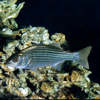
Eleven research teams from VIMS have received funding from NOAA’s Chesapeake Bay Office to study species that play an important role in the Bay’s ecology, commercial fisheries, and recreational angling.

Eleven research teams from VIMS have received funding from NOAA’s Chesapeake Bay Office to study species that play an important role in the Bay’s ecology, commercial fisheries, and recreational angling.

VIMS researchers are working with commercial anglers to foster sustainable and profitable fisheries in the near-shore waters of the Mid-Atlantic and New England.

Local oyster growers learn how ocean acidification may affect their operations, and how they could best respond.
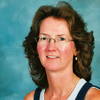
VIMS mourns the passing of Professor Rebecca Dickhut, a valued member of the VIMS community and an internationally recognized expert in the field of environmental science.
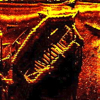
Partnership between VIMS and the Watermen's Museum in Yorktown lets schoolchildren use robotic subs to study Yorktown shipwrecks.
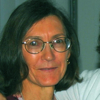
Carol Hopper Brill of the Virginia Institute of Marine Science receives the Informal Educator Award from the Mid-Atlantic Marine Education Association.

VIMS professor Bob Diaz serves as an author, expert consultant, and reviewer of "Hypoxia and Nutrient Reduction in the Coastal Zone: Advice for Prevention, Remediation and Research."

Erica Holloman will work with community groups to identify and reduce risks from toxic pollution in the Southeast Community, a historically African-American and highly industrialized area of Newport News.
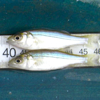
VIMS survey reveals a strong class of young-of-year striped bass will enter the adult population in 2012. That's good news for anglers and the Bay ecosystem.

VIMS professor Mark Patterson will assist a team of NASA astronauts as they visit the Aquarius habitat for a 2-week mission to develop techniques for a planned trip to an asteroid.
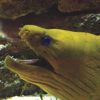
Dill Pickle, a large green moray eel that had fascinated and educated countless visitors to VIMS during the past decade, passed away in late September.
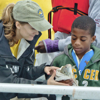
Marine recreation specialist Susanna Musick helps youngsters tag fish during annual youth-focused fishing event.
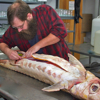
Dr. Eric Hilton leads effort to resolve the tangled classification of one of the world’s most ancient and threatened group of fishes.
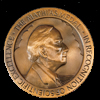
VIMS professor emeritus Eugene Burreson receives prestigious honor for his contributions to Chesapeake Bay science and policy.
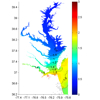
VIMS professor Harry Wang and colleagues win a prestigious award for their leading role in developing and applying the Chesapeake Bay Inundation Prediction System.
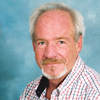
Dr. Kirkley was a pioneer in the analysis of fishery economics during his 24-year career at VIMS.
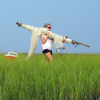
In-house competition recognizes the most engaging images taken by VIMS faculty, students, and staff in the field and lab.
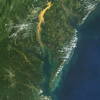
Data will allow researchers to gauge how a large plume of sediment from Hurricane Irene and Tropical Storm Lee may impact water quality and baygrasses in lower Chesapeake Bay.
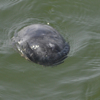
VIMS professor identifies mysterious objects on local beaches as decaying potato sponges.

VIMS professor Bob Diaz is part of a nationwide team that recently received a three-year, $12M grant to study the effects of the Deepwater Horizon oil spill on the Gulf and its marine life.
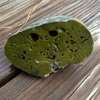
Coastal residents ask about the strange flotsam they've found atop waterways and strewn along beaches.
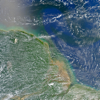
VIMS researchers join an international team to study how the Amazon River's huge freshwater plume affects the biology and chemistry of the Atlantic Ocean.
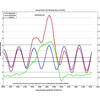
Observations and real-time computer modeling of storm tides by VIMS researchers during Irene benefit forecasters and emergency managers.

Facility upgrades and hard work by staff help VIMS escape any major damage from Hurricane Irene.
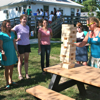
Incoming class brings a wealth of research experience to their graduate studies in the School of Marine Science at VIMS.

The Association for Unmanned Vehicle Systems International recognizes Mark Patterson with inaugural award.
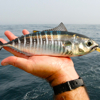
A global study by an international team including VIMS professor John Graves quantifies the threat to tuna and billfish species around the world.
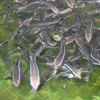
A tagged and recaptured cobia provides hope that the species could be a candidate for stock enhancement if the need arises.
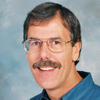
Leading anglers' magazine selects John Graves for one of its inaugural Making a Difference awards.
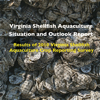
A new report from VIMS and Virginia Sea Grant shows the Commonwealth’s oyster aquaculture industry is poised to begin its biggest growth spurt ever.
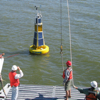
Professor Carl Friedrichs and colleagues have received a three-year grant from the National Science Foundation to observe and model how wind affects the development of low-oxygen “dead zones” in Chesapeake Bay and the York River.
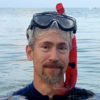
Dr. Emmett Duffy is honored with the inaugural Kobe Award for his achievements in marine science.
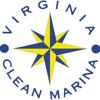
Rappahannock River marina recognized for taking voluntarily measures to reduce pollution.

Demolition of a number of older buildings is part of the Institute’s overall plan to become “greener” and more energy efficient.
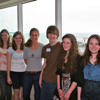
Summer residential program provides high-achieving high-school students with authentic experiences in marine research.

The Chesapeake Bay Program’s Scientific and Technical Advisory Committee has appointed Kirk Havens to serve as the Committee’s Vice Chair and Chair-Elect.

An international group of students visits VIMS to learn about the eggs, larvae, and juveniles of 180 different fish families.
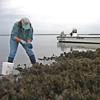
Development of disease resistance among Chesapeake Bay oysters calls for a shift in oyster-restoration strategies within the Bay and its tributaries.
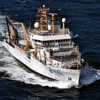
NOAA selects Dr. Tracey Sutton to survey deep-sea life in the Gulf of Mexico as part of the long-term scientific response to the Deepwater Horizon oil spill.

The Tidewater Oyster Gardeners Association has provided VIMS with an initial gift of $27,000 to establish the TOGA Fellowship Endowment in support of research by VIMS graduate students.

VIMS professor Mark Brush has been voted president-elect of the Atlantic Estuarine Research Society, the mid-Atlantic regional affiliate of the international Coastal and Estuarine Research Federation.
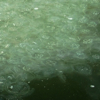
Study shows that jellyfish can drastically alter marine food webs by shunting food energy from fish toward bacteria.
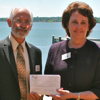
$50,000 gift from Dominion Foundation will fund purchase of an underwater video system for field studies in Chesapeake Bay.
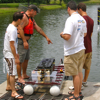
Professor Mark Patterson will manage logistics for the 4th International RoboBoat Competition from June 9 - 12.
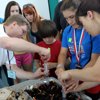
Nearly 2,500 people enjoyed a behind-the-scenes look at how VIMS research helps empower Virginians to protect and restore the coastal environment.
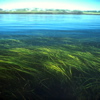
The first-ever study of the conservation status of individual seagrass species shows that 14% are at an elevated risk of extinction.
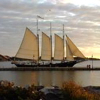
VIMS and Yorktown Sailing Charters have begun a unique partnership to share knowledge of Chesapeake Bay and its marine life with passengers aboard the schooner Alliance during two-hour “Science Under Sail” cruises on the York River.
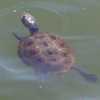
“TerpSearch” survey could lead to more effective management of activities that contribute to mortality of diamondback terrapins in the Commonwealth.
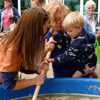
VIMS' annual open house will take place on Saturday May 21 with a wealth of fun and educational activities for the whole family.
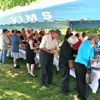
VIMS Dean and Director John Wells bestows service and student awards on selected individuals from the VIMS community during the Institute's annual Award Ceremony.

Professors Deborah Bronk and Walker Smith have been selected to receive Plumeri Awards for Faculty Excellence.

The device, small and sturdy enough to be used from a boat, can detect marine pollutants like oil much faster and more cheaply than current technologies.
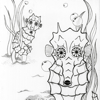
Beth Beaubien of Williamsburg wins annual contest for her line drawing of a seahorse.
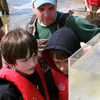
CBNERR program allows visiting middle school students to learn while getting wet and muddy in Chesapeake Bay.
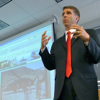
Congressman Rob Wittman (R-Va.) meets with Marine Science minors and gives a public lecture as the College's 2011 Hunter Andrews Fellow.
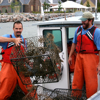
Watermen haul up more than 10,000 derelict crab pots and fishing nets from Chesapeake Bay in the third year of Virginia’s one-of-a-kind Marine Debris Removal Program.

In addition to its ongoing work to protect and restore Chesapeake Bay, VIMS has redoubled its efforts to promote the “green” infrastructure and activities that are celebrated on Earth Day.

Coverage of underwater Bay grasses fell by 6,239 acres in Chesapeake Bay and its tributaries, partly due to hot summer temperatures.
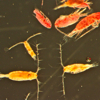
A new VIMS study shows that turbulence from boat propellers can and does kill large numbers of copepods—tiny crustaceans that are an important part of marine food webs.
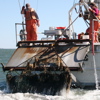
VIMS' winter dredge survey shows that Chesapeake Bay’s blue crab population is at its second highest level since 1997 and well above the target for the third year in a row.
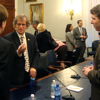
VIMS professor Roger Mann testifies before the U.S. House of Representatives Subcommittee on Fisheries, Wildlife, Oceans, and Insular Affairs in regards to the "Chesapeake Bay Accountability and Recovery Act of 2011."

Dr. Bruce Wielicki explains how cold spells and blizzards can occur with global warming.
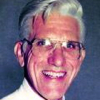
Junius Ernest Warinner, III retired from VIMS as an adjunct assistant professor in 1991 following a notable 30-year career.
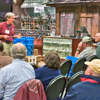
Awards ceremony honors volunteer anglers for their contributions to the Virginia Game Fish Tagging Program.

Professor emeritus Maynard Nichols creates a travel fellowship to help graduate students share their research results with external colleagues.
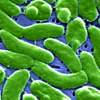
Local oyster growers and VIMS researchers find that moving farmed oysters into saltier waters just prior to harvest nearly eliminates the presence of a bacterium that can sicken humans.
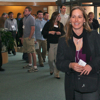
Three-day meeting of the American Fisheries Society’s Tidewater Chapter brings together researchers from VA, MD, and NC.

Professor emeritus Dexter Haven was a pioneer in early shellfish studies in Chesapeake Bay, and lead author of what many consider the seminal paper on the Bay's oyster stock and fishery.
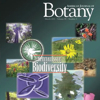
An international research team that includes professor Emmett Duffy of VIMS finds that loss of plant biodiversity disrupts the fundamental services that ecosystems provide to humanity.
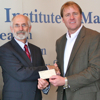
The Gloucester Point Rotary Club makes a $5,000 gift to honor J. Ernest Warinner and to support graduate students at VIMS.
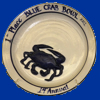
Bishop Sullivan Catholic High School wins the 2011 Blue Crab Bowl, a record-setting 4th straight victory in the region's premier academic contest in marine science.
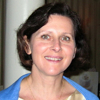
VIMS professor awarded prestigious fellowship to enhance skills in communicating science to citizens and policymakers.
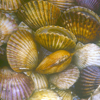
VA scallop industry provides $1.7 M to VIMS to help monitor stocks of this commercially important species.
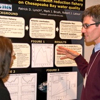
Patrick Lynch joins five other College of William & Mary graduate students in presenting cutting-edge research at the Graduate Student Research Forum in Richmond.

A hardy group of recreational anglers catch, tag, and release red drum and speckled trout as part of the Virginia Game Fish Tagging Program.
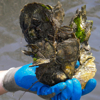
A new study co-authored by VIMS professor Mark Luckenbach shows that decline of oyster reefs is not confined to Chesapeake Bay.

Governor McDonnell honors professor Bob Diaz with an Outstanding Scientist Award for his work on low-oxygen marine "dead zones."
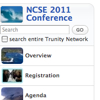
VIMS professors are invited participants in the National Conference on Science, Policy, and the Environment in Washington, D.C.
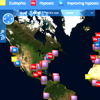
Joint research by VIMS and the World Resources Institute identifies and maps more than 530 low-oxygen “dead zones” and 228 sites with signs of marine “eutrophication.”

Governor Bob McDonnell has appointed professors Carl Hershner and Roger Mann to state advisory boards concerned with water resources and aquaculture.
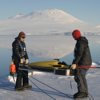
Tests of a free-swimming underwater glider in the icy waters of Antarctica mark the most southerly glider deployment ever and the first successful glider dive beneath the Ross Ice Shelf.

Margaret Pizer and Lisa Lawrence receive a BoatUS Recreational Boating Access Award for their work on the "Accessing the Virginia Coast" website.

Professor Deborah Bronk leads a study of the Arctic coastal ecosystem, and how climate change might affect nutrient supplies, the food web, and native peoples.
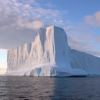
A research team led by professor Deborah Steinberg has returned to Antarctica for their annual 6-week field season.
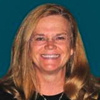
Professor Linda Schaffner of the Virginia Institute of Marine Science will oversee the graduate and undergraduate programs of the College of William and Mary’s School of Marine Science at VIMS.